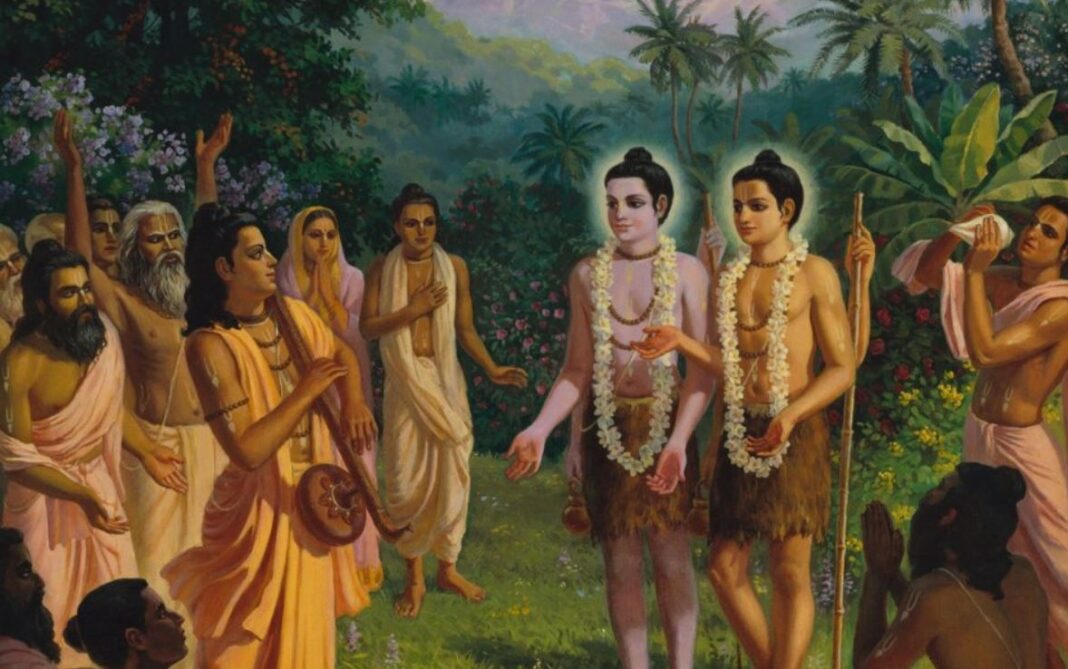The twin sages Nara and Narayana are Lord Vishnu’s incarnated avatars. Humans are referred to as Nara and as Narayana, the greatest Lord. To uphold Dharma on earth was the goal of their manifestation. The twin sages who came to earth to banish sins and establish virtue and righteousness were described in ancient literature.
They were well-known for their battles against evil to defend Dharma on earth as Krishna and Arjuna in the Mahabharata. Nara-Narayana is identified as the fourth earthly manifestation of Lord Vishnu in the Bhagavata Purana.
History
According to Hindu literature, the sages were the sons of Dharma (one of Lord Brahma’s mind-born sons) and Murti (daughter of Daksha).
These twins have been inseparable since childhood. Nara and Narayana travelled to Badrinath and spent their entire lives undertaking severe austerities for the benefit of humanity. Lord Shiva even unleashed his most devastating heavenly weapon, Pashupatastra, at them to put them to the test. However, due of their deep penance and commitment, the sword lost its potency as it approached them. Lord Shiva recognised they had reached the pinnacle of Samadhi.
Nara and Narayana stories
Stories concerning Nara and Narayana can be found in the Bhagavata Purana and the Mahabharata; below are a few of them.
Celestial nymph Urvashi’s birth
Heavenly nymph Urvashi is regarded as the most attractive apsara (nymph) with exceptional dancing abilities. Her birth narrative is described in the Bhagavat Purana.
Lord Nara and Narayana once practised fasting in Badrinath. The Lord of the Heavens, Indra, was frightened by their energy. Therefore, Lord Indra dispatched celestial nymphs and Kamadeva, the god of lust and love, to distract the twin sages from their penance (Apsaras).
Apsaras made every attempt to annoy Nara and Narayana but were unsuccessful. Instead, Lord Narayana arranged a flower on his thigh, and an attractive apsara arose from it. Even the heavenly apsaras and Kamadeva had to flee to heaven in humiliation due to her overwhelming beauty and charm. She was given the name Urvashi because the apsara was born from the thigh (Uru) of the guru Narayana.
Nara-Narayana was not enraged with Kamadeva, Basanta (spring), or the apsaras since he understood their motivations. Instead, they asked to take Urvashi to heaven along with them.
ALSO READ: Draupadi: Inventor Of Pani Puri
Karna and Nara-Narayana
King Dambhodabhava became the ultimate entity of the cosmos during the Treta Yuga by turning evil. He so endured harsh penance for a long period of time in order to appease Surya Deva. The Sun-god offered the king a thousand pieces of armour that were affixed to his body since he was pleased with him. It takes a thousand years of penance to kill him, and each time an armour was shattered, someone perished.
With such immense power, he started creating destruction all over the world. So, to eradicate him, Nara-Narayana challenged him to a fight. Nara fought with Sahasrakavacha while Narayana meditated for a thousand years. Both of them alternatively took turns to fight against Sahasrakavacha and meditate.
Finally, leaving Sahasrakavacha with the last armor. To avoid his death, Sahasrakavacha asked the sun god for assistance. The sun god promised Sahasrakavacha for protection.
Sahasrakavacha had a chance to avoid dying because the Yuga changed at the same moment. At that very moment, Narayana said that he and Nara will both reincarnate as Krishna and Arjuna in order to defeat Karna (Sahasrakavacha) in the Dwapar Yuga.
When Lord Indra assumed the appearance of a brahman during the Mahabharata conflict, he requested his armour, which Karna readily provided. Arjuna was able to kill Karna without the last armour providing any protection.
ALSO READ: why 108 is important in Hinduism?



